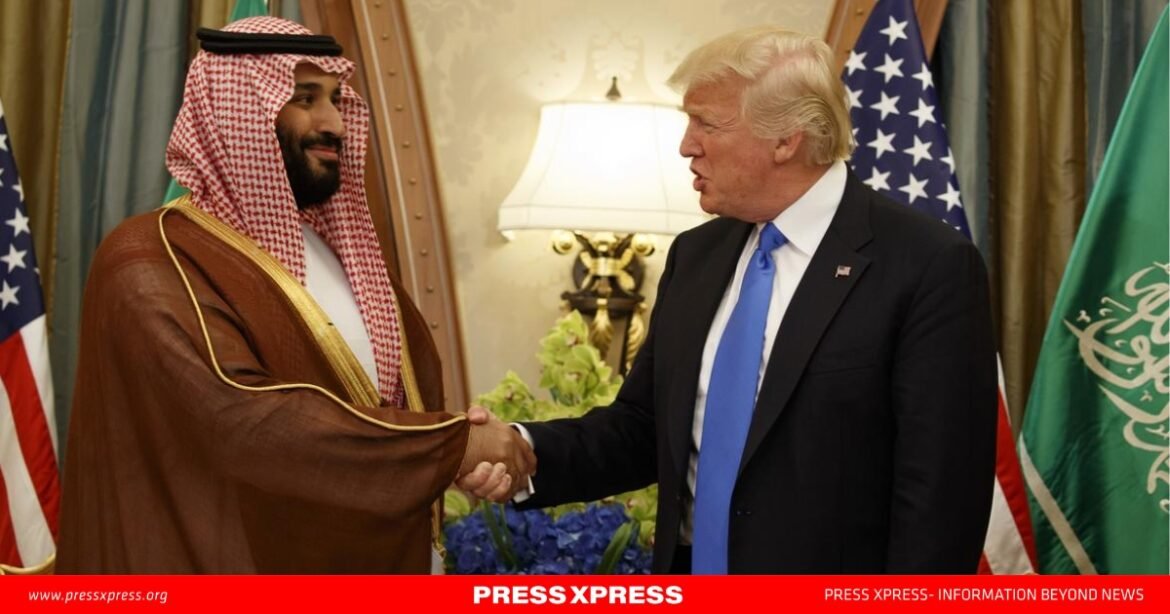Saudi Arabia’s Crown Prince Mohammed bin Salman (MBS) has announced a $600 billion investment in the United States over the next four years—a bold move that intertwines Saudi Arabia’s economic strategy with its geopolitical ambitions. This unprecedented pledge, one of the largest by any foreign government to the US, is as much about economics as it is about political leverage. However, the sheer scale of the investment, combined with Saudi Arabia’s domestic and regional challenges, raises questions about the feasibility and strategic purpose of this initiative.
The Strategic Timing of the Pledge
The announcement comes early in President Donald Trump’s second term, reinforcing the close relationship between the two leaders. Saudi Arabia was a pivotal ally during Trump’s first term, with Trump securing arms deals and investments worth billions from the kingdom. This new pledge extends that dynamic, ensuring Saudi Arabia remains central to Trump’s economic agenda while signaling MBS’s intent to deepen ties with Washington.
At 55% of Saudi Arabia’s GDP, the investment highlights the kingdom’s commitment to securing its partnership with the US. Yet it arrives during a period of fiscal strain for Saudi Arabia. Oil prices, hovering around $80 per barrel, remain below the $90 threshold needed to balance its budget. The kingdom is also grappling with the heavy financial burden of Vision 2030, an ambitious plan to diversify its oil-dependent economy through investments in technology, renewable energy, and tourism.
Economic Strategy or Political Leverage?
While this pledge aligns with Vision 2030’s goals, it carries a distinct geopolitical undertone. By committing $600 billion, MBS is cementing Saudi Arabia’s role as a critical partner in Trump’s transactional foreign policy. For Trump, the investment is a political win, offering a tangible boost to the US economy while strengthening the perception of his deal-making prowess.
In return, Saudi Arabia is likely seeking assurances on key issues, including defense cooperation, arms sales, and regional stability. The kingdom also wants to maintain US support in countering Iranian influence and managing contentious normalization talks with Israel.
Critics, however, warn that this transactional relationship may blur the lines between national interests and personal gains. Trump’s business ties to Saudi Arabia—including investments linked to LIV Golf and real estate projects—have drawn scrutiny, fueling concerns about the potential for conflicts of interest.
Regional Implications
The timing of the pledge coincides with significant shifts in the Middle East. Iran’s influence has weakened following setbacks suffered by its proxies, Hamas and Hezbollah, in their conflicts with Israel. Meanwhile, Saudi Arabia is navigating stalled normalization talks with Israel, where it insists on Palestinian statehood as a precondition—a stance that clashes with Trump and Israeli Prime Minister Benjamin Netanyahu’s priorities.
In this context, the $600 billion investment serves as both an olive branch and a bargaining chip. It reinforces Saudi Arabia’s commitment to stability in the region while strengthening its hand in negotiations with the US on sensitive geopolitical issues.
Challenges to Implementation
Despite its ambition, the pledge faces significant hurdles. Saudi Arabia’s economy remains heavily reliant on oil revenues, and its fiscal health has been under pressure since the 2020 oil price crash. Delivering on such a massive foreign investment without compromising domestic priorities will test the kingdom’s financial and administrative capacity.
Additionally, the pledge appears to contradict recent shifts in Saudi policy. The Public Investment Fund (PIF), which oversees many of Saudi Arabia’s investments, announced plans last year to reduce foreign allocations to prioritize domestic economic growth. This sudden reversal raises questions about the kingdom’s long-term investment strategy and its ability to manage competing priorities.
Implications for the US
For the US, the pledge represents a significant economic boost, particularly in sectors like technology, infrastructure, and defense. It also strengthens the US-Saudi alliance at a time when global competition is intensifying, particularly with China and Russia.
However, this reliance on Saudi investments comes with risks. Critics argue that it could entangle US foreign policy with the kingdom’s regional agenda, potentially complicating relations with other Middle Eastern nations. Future US administrations may also find themselves constrained by the commitments forged under Trump, limiting their ability to adopt a more balanced approach to the region.
The Bigger Picture
MBS’s $600 billion pledge is a bold statement of Saudi Arabia’s ambitions. It underscores the kingdom’s determination to secure a prominent role on the global stage while addressing its domestic and regional challenges. Yet, it is also a high-stakes gamble. With oil revenues under pressure and the demands of Vision 2030 escalating, Saudi Arabia risks overextending itself.
For Trump, the pledge reinforces his reputation as a dealmaker and provides a significant early win in his second term. But as the relationship between Washington and Riyadh becomes increasingly transactional, questions about its durability and long-term consequences remain.
Ultimately, this $600 billion investment reflects the evolving dynamics of US-Saudi relations—a complex interplay of economic ambition, political strategy, and the shifting sands of Middle Eastern geopolitics. Whether it proves to be a transformative partnership or a cautionary tale of overreach will depend on how both nations navigate the challenges ahead.


